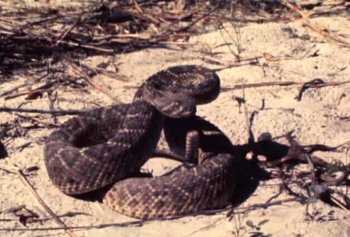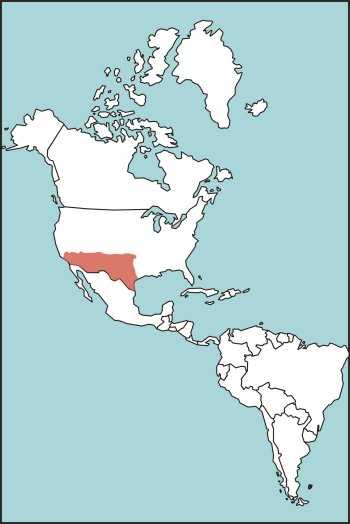Appendix E
DESCRIPTIONS OF VENOMOUS SNAKES
Western diamondback rattlesnake

Western diamondback rattlesnake
Crotalus atrox
Description: The body is a light buff color with darker brown diamond-shaped markings. The tail has heavy black and white bands.
Characteristics: This bold rattlesnake holds its ground. When coiled and rattling, it is ready to defend itself. It injects a large amount of venom when it bites, making it one of the most dangerous snakes. Its venom is hemotoxic, causing considerable pain and tissue damage.
Habitat: It is a very common snake over its range. It is found in grasslands, deserts, woodlands, and canyons.
Length: Average 1.5 meters (5 feet), maximum 2 meters (7 feet).
Distribution: Southwest United States, particularly southeast California, Oklahoma, Texas, New Mexico, and Arizona (Figure E-17).

Figure E-17. Western Diamondback Rattlesnake Habitat
Survival index
All text and images from the U.S. Army Field Manual 3-05.70: Survival.
Appearance of the materials from the U.S. Army Field Manual here does not constitute or represent endorsement by probablyhelpful.com.
ProbablyHelpful.com is not responsible for inaccurate or outdated information provided by the U.S. Army Field Manual 3-05.70.

